High force linear actuators: hydraulic vs roller screw actuators
By Tolomatic on August 23, 2016
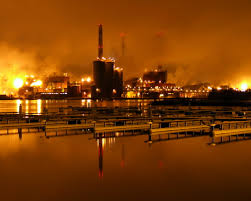 Hydraulic cylinders have long been a leading choice for factory automation equipment needing a high force linear actuator. However, there have been advances in electric actuation (for example, the availability of roller screw actuators) which make these electric actuators suitable now for many high force applications.
Hydraulic cylinders have long been a leading choice for factory automation equipment needing a high force linear actuator. However, there have been advances in electric actuation (for example, the availability of roller screw actuators) which make these electric actuators suitable now for many high force applications.
Industrial machine designers faced with choosing between hydraulic and electric actuation need an understanding of how each can benefit their application. This blog will review both types of high force linear actuators, hydraulic cylinders and electric linear actuators (roller screw actuators, in particular), on a variety of parameters. For a more in-depth comparison of these actuation technologies, download our white paper.
Force
Hydraulic cylinder systems produce high forces because of their high operating pressures [1800 to 3000 psi (124.1 to 206.8 bar)]. Because Force = Pressure x Area, even a 3-inch cylinder at 2200 psi can achieve 15,000 lbf (66,723.3 kN). However, hydraulic cylinders often are oversized to improve control and may not operate at full force.
Roller screw-powered electric linear actuators can deliver forces of 13,039 lbf (58,023 N) and higher and can be used in many applications that call for a high force linear actuator. A major advantage of electrical actuators is that force is instantaneous. Current passing through the servo motor produces torque that drives the roller screw and generates force. A hydraulic actuator must wait for pressure to build until force is achieved.
Control
A hydraulic actuator works well in simple, end-to-end position applications. However, applications that call for mid-stroke positioning require a more complicated set-up that includes a control valve and operator assistance.
An electric linear actuator with roller screw and servo drive/motor offers infinite control over position, velocity, acceleration/deceleration, output force, and more. Adjustments can be made on the fly, plus accuracy and repeatability levels are far better than those of a hydraulic system.
System footprint
A hydraulic system often includes a cylinder, power unit, control and accessory valves, filters, hoses, and additional components. The cylinder itself offers a compact footprint at the work point, but the hydraulic power unit (HPU), which regulates oil pressure and flow, can require a lot of floor space.
An electric actuator has a smaller overall footprint with its combination of actuator, motor, and cables. The drive/amplifier is usually mounted in a control cabinet. Size requirements for an electric servo actuator system are normally a fraction of those of a hydraulic cylinder plus HPU.
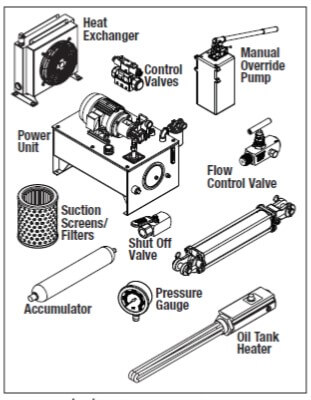 Velocity
Velocity
It can be difficult for both hydraulic and electric actuators to achieve high velocities at high forces.
For a hydraulic cylinder to achieve high speeds at higher forces, there must be enough pressurized oil in the system to push the specified volume of oil in the cylinder in the required amount of time. There often must be an accumulation system to hold the pressurized volume.
The force capabilities of an electric actuation system depend on the right combination of motor RPM, motor torque, and screw characteristics. As servo motors increase in size, torque increases significantly but RPMs decrease. This limits speed. However, an electric actuator has control over the motion profile and doesn’t have to stroke the entire length of each cycle. Also, a roller screw linear actuator may be able to deliver the peak velocities required since it can execute shorter, more intelligent moves.
Sensitivity to temperature
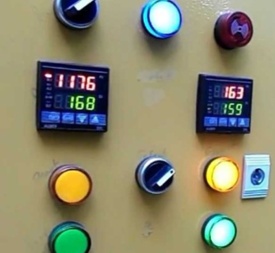 Hydraulic systems are sensitive to temperature. The oil in these systems gets thicker and slower-moving in the cold resulting in sluggish and inconsistent actuator performance. In higher temperatures caused by overheating or the environment, oil may degrade and seals fail. Both conditions may require additional system components and cost. A tank heater can maintain operating temperature in the cold. A heat exchanger can mitigate overheating.
Hydraulic systems are sensitive to temperature. The oil in these systems gets thicker and slower-moving in the cold resulting in sluggish and inconsistent actuator performance. In higher temperatures caused by overheating or the environment, oil may degrade and seals fail. Both conditions may require additional system components and cost. A tank heater can maintain operating temperature in the cold. A heat exchanger can mitigate overheating.
Electric actuation systems are much less temperature-sensitive. Due to higher efficiency, electric systems can be selected to run at desired temperature for the given amount of work required. Accurately predicting temperature allows the electric actuation system to perform consistently without affecting the life of the device. Electric devices can be specified with optional extreme temperature grease for fast response in the cold.
Life and maintenance
Hydraulic cylinders are rugged devices that offer long service life when maintained properly. However, maintenance requirements (new seals, oil, and filters) can mean machine downtime and added cost.
If the electric linear actuator is sized correctly for the application, there is no maintenance required so there is no downtime. Proper roller screw actuator selection starts with an accurate calculation of actuator life. For correct sizing, rely on our sizing software.
Data collection
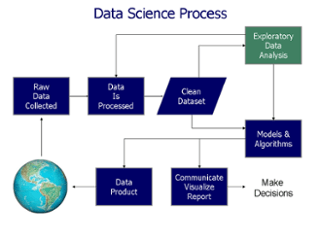 Manufacturing management is very interested in monitoring and measuring all aspects of production performance. This has given rise to the need for data collection at the work point.
Manufacturing management is very interested in monitoring and measuring all aspects of production performance. This has given rise to the need for data collection at the work point.
When it comes to hydraulic actuation, only expensive, complex servo-hydraulic systems with additional sensors can track and monitor position, velocity, force, etc. at the work point. Standard hydraulic actuation systems don’t have data collection capabilities.
Sensing capability is built into an electric actuator’s servo system. Motor current monitoring tracks force and repeatability. The motor’s feedback device registers position and velocity.
Electricity costs
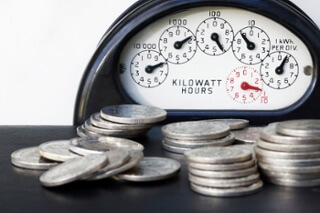 Hydraulic systems are typically 40-55% efficient in converting electrical power to motion. The HPU needs to be powered up to keep the hydraulic system pressurized whenever the system is on. The result is inefficient use of power.
Hydraulic systems are typically 40-55% efficient in converting electrical power to motion. The HPU needs to be powered up to keep the hydraulic system pressurized whenever the system is on. The result is inefficient use of power.
Electric linear actuator systems typically operate in the 75-80% efficiency range. The actuator at rest requires no current or very low amounts of current to hold its position.
Environmental risks
Hydraulic actuation systems are prone to oil leaks that can create safety hazards, contaminate products and pollute the environment. Clean-up can be costly and time-consuming.
Electric actuation is one of the cleanest linear motion technologies. Grease on the roller screw is the only potential contaminant, and special greases (food grade, clean room, etc.) can be specified. Seals keep grease inside the actuator, virtually eliminating contamination issues.
To summarize
When you need a high force linear actuator, consider all these factors carefully. While hydraulic actuation systems may be appropriate for simple motion profiles with high force requirements, an electric actuation system can offer many advantages for complex linear motion. As a machine designer, you’ll want to look beyond force capabilities to consider relevant factors like footprint size, control capabilities, velocity, data collection, efficiency, maintenance, temperature sensitivity, and the hazards of leaks.
For more information on electric and hydraulic actuators as they relate to these factors, see our white paper: Electric rod actuators vs. hydraulic cylinders: A comparison of the pros and cons of each technology. Download it here.
And contact an expert like Tolomatic. We’re here to help.

 Ask an Engineer
Ask an Engineer